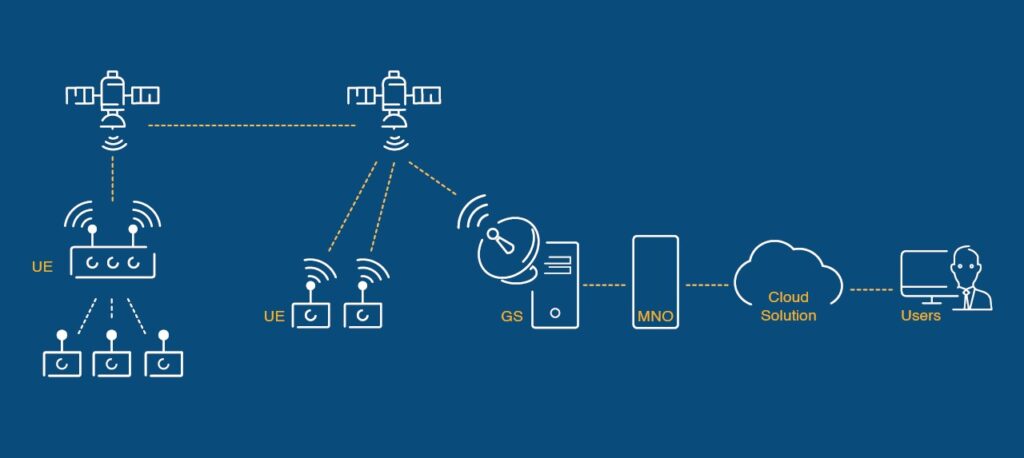ESA Project on Narrow Band IoT for SmallSat Networks
Over the years, GateHouse SatCom has been involved in several projects with the European Space Agency (ESA), and we are currently involved in a program with the main objective of being the first to demonstrate true 5G Narrow Band IoT Non-Terrestrial Network (NB-IoT NTN) connectivity using satellites in Low Earth Orbit (LEO). Recently, ESA granted funding to further develop the software for coming Narrow Band IoT network based in space, offering 5G connectivity in regions with limited coverage.
See the objective on the ESA webpage
Details and results of the first phase of the ESA project
In the first phase of the ESA project, we have proposed a system architecture for NTN NB-IoT where the primary focus was a regenerative LEO-600 constellation. This means that the NB-IoT protocol is implemented within the satellite, but it is also a part of the Core Network (CN) for enabling the NAS level operations, like e.g. authentication.
The architecture is aligned to the most actual 3GPP directions and specifications in relation to NTN work ongoing for the 3GPP Release 17 and scoping of Release 18.

The key requirement that NB-IoT User Equipments (UEs) can communicate to satellites with equal or very similar Terrestrial network (TN) solutions in relation to chipsets and protocol implementations has been confirmed during the first phase of the ESA project. This has been done by designing, implementing, and performing link-level simulations in Matlab.
GateHouse now has a NB-IoT NTN simulation environment available for the validation of specific network/satellite configurations (e.g. various parameters like antenna size/type, gain, coverage area) and enabling pre-assessment of expected network capacity. Algorithms that have been evaluated are for example NPSS/NSSS detection, DL BLER as function of SNR.
Additionally, work has been done to create an understanding of what adaptions to TN NB-IoT are necessary to enable the NTN variant of NB-IoT. The distance and speed of the satellite need to be taken into consideration. Carrier and signal frequency are influenced by the Doppler effect and propagation time. Compensation can be done, and it is necessary to reach a network communication efficiency and capacity that enable a commercially deployable NTN service.
The efficiency and link-budget of the communication between UEs and satellites influence the power usage to a very high degree. NB-IoT devices are normally specifically chosen due to their small data, low priority, and very effective power usage which enable IoT devices to operate with long battery lifetime.

Other news
Let’s get in touch
Get in touch with us to learn how embedded satellite communications software can enable your roadmap to compete in the rapidly evolving market for connectivity. You can contact us with any specific inquiries or to set up a meeting.
We look forward to hearing from you and to discuss your satellite communications software needs.
